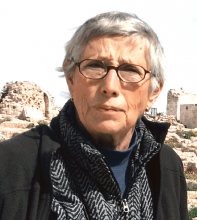You are here
Saving civilisation
Mar 30,2016 - Last updated at Mar 30,2016
Palmyra’s liberation from Daesh by the Russian and Hizbollah-backed Syrian army amounted to a significant victory for Damascus and makes the army the principal anti-Daesh force in the country.
Until Daesh was routed from Palmyra, the US-supported Kurdish people’s protection forces had held that position. The Kurds have driven Daesh from a wide band of territory along the Syrian-Turkish border.
Even after the mid-March surprise withdrawal of the majority of its aircraft and troops from Syria, Russia remains the key external power in Syria on the military front, with Moscow retaining considerable leverage on the political plane.
Before Moscow and Damascus launched their assault on Palmyra, Russia mounted thousands of air strikes against Daesh, Al Qaeda’s Jabhat Al Nusra, its takfiri allies and insurgent bands that had threatened or advanced on government-held areas.
The UN-imposed ceasefire that began on February 27 provided respite for the army from attacks by non-Daesh and non-Nusra forces, enabling the army and residual Russian aircraft to take the battle for Syria to Palmyra, the highest profile of the Daesh-held locations.
Fearful of being dragged into another regional conflict, the US made a mistake when it bet on the Syrian Kurds who know their military and political limits.
They are aware that on their own they cannot tackle Daesh in the north and Raqqa, the cult’s capital, and that advancing into Daesh-held Arab majority territory could produce a backlash from inhabitants.
The Kurds can, however, support an army offensive without overstretching their capabilities and alienating local folk.
Palmyra is a strategic site half way on the highway from Damascus to Daesh-held areas of Deir Ezzor, Syria’s former oil hub.
The Syrian army has cleared this route of Daesh elements and taken villages around Palmyra, as well as tracts of desert. From its Palmyra base, the army can advance northeast to Deir Ezzor city and then west towards Raqqa, Daesh’s capital.
Palmyra was lost to Daesh without a spirited defence by Syria’s faltering army in May 2015, so its return to government control will boost the morale of the army which, until Russia intervened, had been severely stretched and undermanned.
To win battles, armies depend on high morale as well as weapons and allies.
If the US — then involved in aerial strikes on Daesh — had targeted the cult’s columns that were driving to Palmyra along the highway from Deir Ezzor, the Syrian army might have been able to defend the archaeological site and city, depriving Daesh of this prize.
But Washington, apparently, decided not to aid the Syrian army in the battle against Daesh. This amounts to a major civilisational crime committed by people in Washington, comparable to the looting of Iraq’s National Museum in April 2003 under the eyes of US tank crews.
At that time, US defence secretary Donald Rumsfeld responded to the pillage by saying “stuff happens”, demonstrating Washington’s careless ignorance of the history and civilisation of this region.
By regaining Palmyra, Damascus has strengthened its political position ahead of the April 9 resumption of intra-Syrian talks in Geneva.
The government can be expected to resist opposition demands for the removal or resignation of President Bashar Assad, commander-in-chief of the armed forces.
Finally, the Palmyra victory is a public relations coup for the government. On one hand, the army prevented Daesh from continuing its destruction of ancient monuments at this UNESCO World Heritage site.
Last summer, the cult blew up the 2,000 year old Baalshamin and Bel temples, as well as tomb towers on the edge of the ruins. The loss of the Bel Temple, considered as important as the massive ruins at Baalbek, in Lebanon, was particularly tragic because it had served as a pagan house of worship, a church and a mosque. It was a symbol of the unity of the history and civilisation of Syria and Mesopotamia.
Damascus has vowed to rebuild the temples and other monuments destroyed by Daesh. Dr Maamoun Abdulkarim, director of Syria’s antiquities department, has begun assessing the damage from Daesh occupation and fighting.
St Petersburg’s Hermitage Museum has offered to help rebuild, becoming one of the first institutions to make such an offer. Abdulkarim has become a well-known figure in the international community of archaeologists for championing the protection and preservation of Syria’s antiquities during this terrible war.
In an interview with this correspondent last December, he expressed the view that the destroyed temples could be rebuilt with their original stones or stone from the neighbourhood. And, if this is impossible, replicas could be made with 3-D printers.
Thanks to his tireless efforts to compel the international community to recognise the importance of Palmyra, replicas of the Temple of Bel’s entrance arch, already manufactured by 3-D printers, are to be exhibited in London’s Trafalgar Square and New York’s Times Square during April’s world heritage week.
This has been a cooperative effort undertaken by Oxford and Harvard universities and Dubai’s Museum of the Future, a pioneer in digital imaging and 3-D printing in archaeology and conservation.
Iraq’s precious sites of Nimrod and Hatra, also victims of Daesh’s bombs and bulldozers, have not received anywhere near the same attention or publicity given to Palmyra, which has become an icon of the war against Daesh.
Rebuilding Palmyra will focus attention on the city, its liberation and the losses it suffered during a war that need not have happened.
Abdulkarim stated: “If we can save Palmyra, we can save civilisation. This battle is more important than the Battle of Normandy,” which ended World War II.
“We will show the terrorists we will rebuild the Temple of Bel and the Umayyad Mosque in Aleppo.”
This will deprive Daesh of the satisfaction of having destroyed heritage sites to gain publicity.













